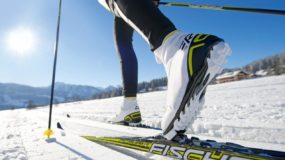Why is it important right choose tires for a car for summer and winter? If the tires are selected according to the season and fit for the car, driving safety is guaranteed, there is confidence on the road and ride comfort.
If you recall minor accidents: a broken headlight, a dent on the wing or a scratch on the bumper, a nightmare! The reason is the discrepancy between the road conditions of the tires, hence the large braking distance and repair costs that can be avoided. Even expensive models pay off more than once.
Types of tires
Before proceeding with the selection, determine the category of tires.
Highway - road tires. Designed to travel on paved roads, whether wet or dry. In winter, you can’t use it categorically, they do not provide strong grip.
All Season or All Weather - all season tires. They have traction on wet or winter roads, combined with comfort. Treads are wear-resistant.
Performance - high-speed tires. Designed for high-end cars. They have enhanced grip properties with the track, a high and comfortable level of control. Resist temperature stress. One minus is quick wear.
All season performance - all-season high-speed tires. They appeared recently, thanks to the use of the latest technologies in production, and were created for those who need high-speed characteristics when operating a car, including movement on ice or snow.
When choosing, stop at two categories of tires. Winter made of soft rubber, in the summer it softens and loses quality, wears out quickly. Summer made of hard rubber and in the winter become elastic, lose their hitch with the road.
There are all-season tires, during their operation you can find enough "pitfalls". They cope worse than specialized ones.
Choosing the right summer tires
Tread pattern - a factor responsible for traction. The clutch provides an asymmetric pattern, which the deeper the better the control of the car in rainy weather. On summer tires there are special grooves along which water comes out from under the wheels. Rain or Aqua markings are present on such rubber, and tires with a V-shaped tread pattern are suitable for dry coating. These patterns are inherent in summer tires.
The size is indicated in the technical documentation of the vehicle. Usually, several sizes are indicated.
It is better not to deviate from the manufacturer's recommendations. When using non-standard tires (the circumference of the operating vehicle is different from the standard), inaccurate speedometer readings (mileage and even speed) are possible.
Balancing is an equally important feature. If the wheels are free of defects and the tire does not balance on the wheels, return it to the seller as a defect. Any driver knows that unbalanced tires wear out faster and cause beating at high speed.
Buy new or used tires?
The drivers have a question, to take new tires or used? The right question. Sometimes it’s preferable to buy used summer tires than a new low-quality one. True, used tires serve less. If you do not change in a timely manner, there will be problems with handling, and with the police.
If the question rests on finances, this is an opportunity to save without risk to life and health. If you are talking about saving, you should know that products of a well-developed brand are more expensive than a less well-known one. Different types of rubber cannot be put on one axis. Ideally, all 4 tires should be the same.
How to choose the right winter tires
Winter is far away, but prepare your sleigh in summer! Buying winter tires in the summer can save you money. In season they are more expensive than in summer. Of course, you can not take winter tires. You can travel all winter and summer, but this is a risk not only for the car, but also a danger to others.
The choice of winter tires depends on the weather conditions that prevail in the region. Therefore, it is impossible to give an accurate assessment of winter tires, it cannot be said that some are better than others. There are general recommendations that will help you choose winter tires for the car.
Spikes or not spikes?
With the help of spikes, a higher coefficient of coupling of winter tires with the road can be achieved. If you buy studded, you have two options: to buy studded from the factory or to stud ordinary winter tires. The more studs, the more reliable the grip, less slippage and braking distance. The best effect is if the spikes are randomly located rather than in a single line. You need to know, studding is not performed on every winter tire, consult with the seller.
Most of the winter (especially in cities) is wet on the roads. In this case, buy non-studded tires. There are a number of reasons for this:
- studded are ineffective when accelerating a car or braking it on asphalt,
- on studded tires on asphalt, a smaller spot of contact of the wheels with the road, and this affects the controllability of the car and increases the danger.
Studded while driving on asphalt make a lot of noise.
Tread pattern
If you have to ride in the snow, keep in mind that the handling of the equipment depends on the tread pattern on winter tires. As practice shows, tires with a large number of checkers arranged in a checkerboard pattern have the greatest effect. Pay attention to the depth of the picture, the main parameters for most models are 9-10 mm. There are strips on the protectors, they are called lamellas. They affect grip. Thanks to the strips, studded and non-studded winter tires hold onto the road more reliably.
When driving in wet snow, use rubber with a directional tread pattern that promotes the outflow of slush from under the wheels. The drawing is similar to the drawing of summer tires for rain, the so-called Christmas tree.
The size
Choose the tire size for winter from those recommended by the automaker. Wide rubber increases contact with the road, and traction - reduces. If you don’t have the right size, buy a little smaller in width, but with a higher profile in height.
Exploitation
The operation of winter tires requires certain rules. Many “change shoes” when the first snow falls and ice appears. This is a mistake, as it leads to an increase in accidents at the beginning of winter. They recommend changing tires when the temperature is 7 degrees outside.
Winter “shoes” need careful operation at the initial stage. Smooth running-in without sharp braking and abrupt start, accurate cornering - recommendations for extending the life of winter tires.
Is it possible to put winter tires only on driving wheels?
The question often arises: is it possible to put winter tires only on drive wheels in order to save money? According to experts, this affects the behavior of the machine not for the better. Let's look at some examples.
- If the rear-wheel drive car, then when braking, the mass is transferred to the front wheels. So, there is practically no benefit from winter tires only on the rear wheels.
- If a car enters a turn on an icy road, and studded tires only on the rear wheels, the car will not obey the steering wheel.
- The installed winter tires on the front wheels of the front-wheel drive cars will allow them to move faster, but when braking or slowing down, the rear wheels can become useless, and this is already an emergency.
Do not tempt fate, do not save on small things, but buy a complete set of winter tires.This is especially true for unexpected situations when a car skidding or emergency braking occurs, the car will be more confident if it costs a full set of winter tires.
Do not forget to stick the “Ш” sign if studded tires are installed. Other drivers will realize that you have a short braking distance and will keep their distance. Wish you a good road!










